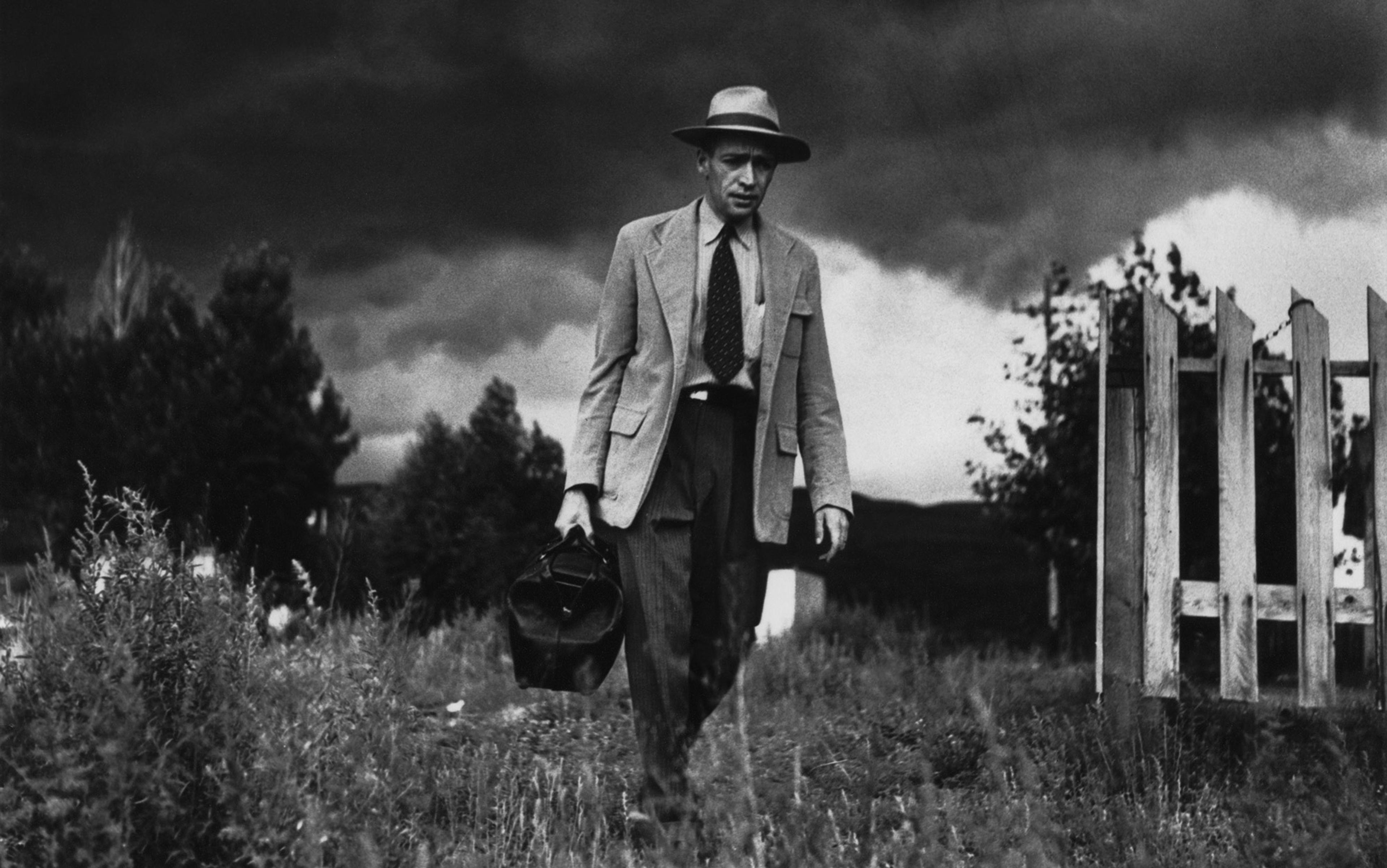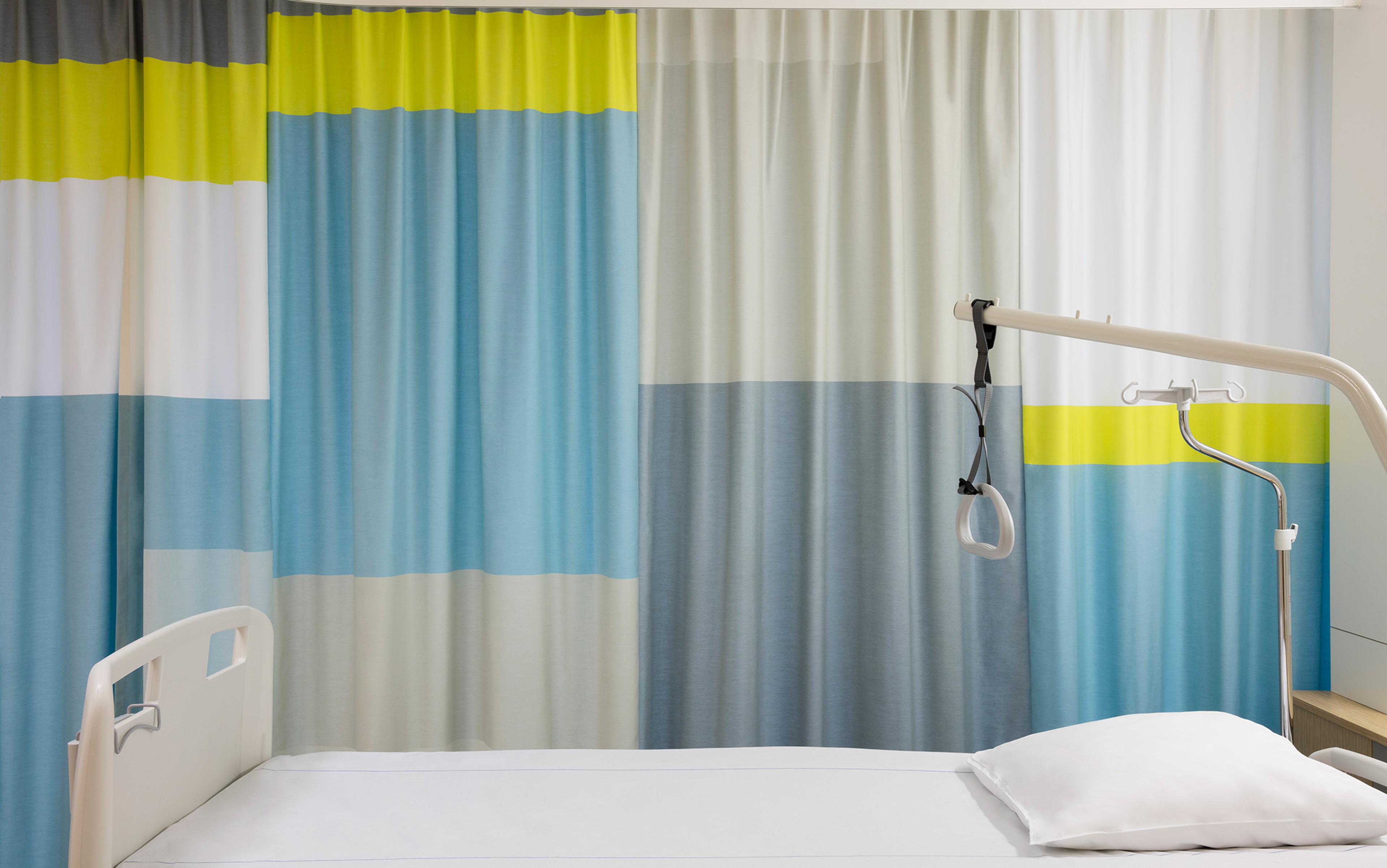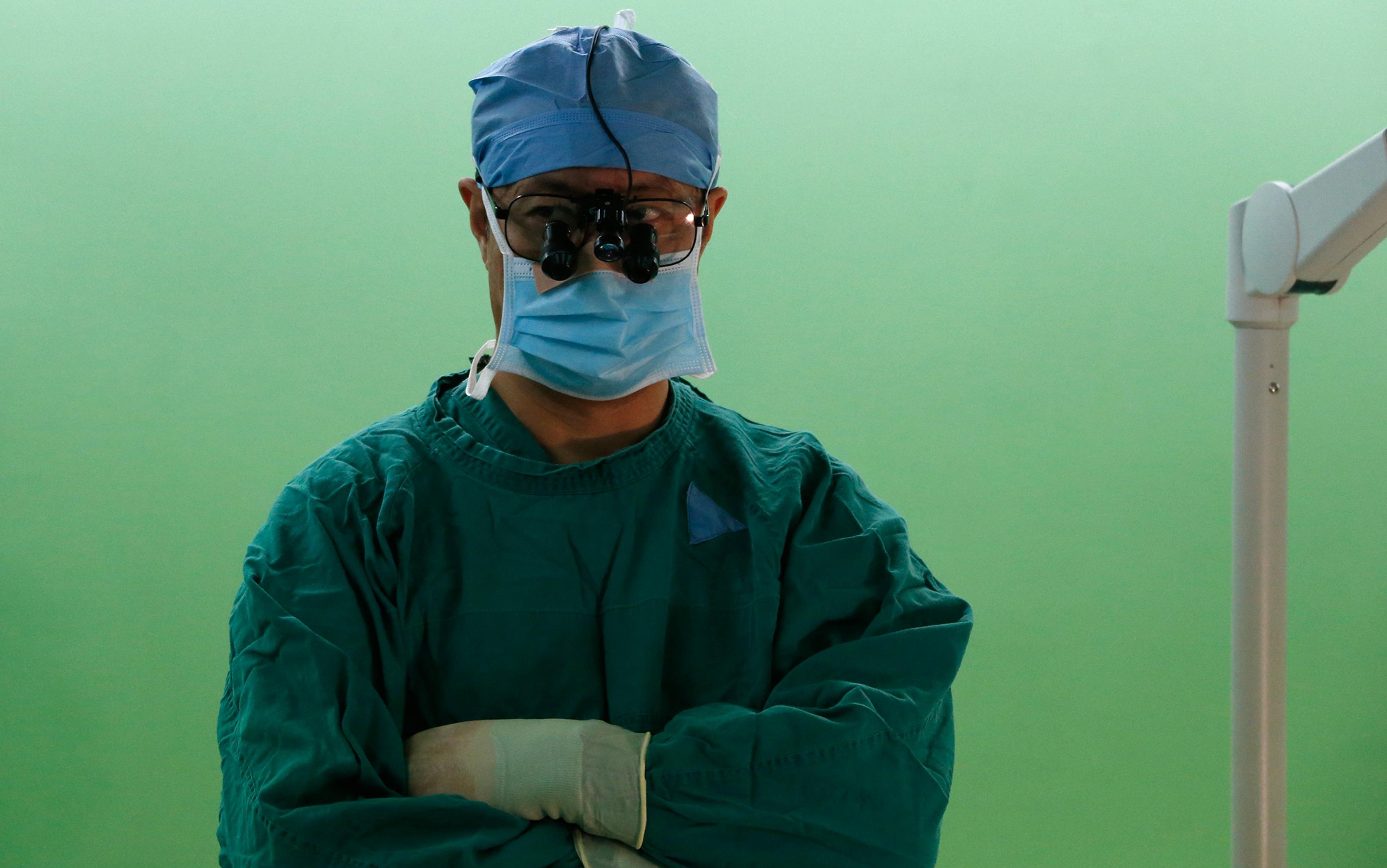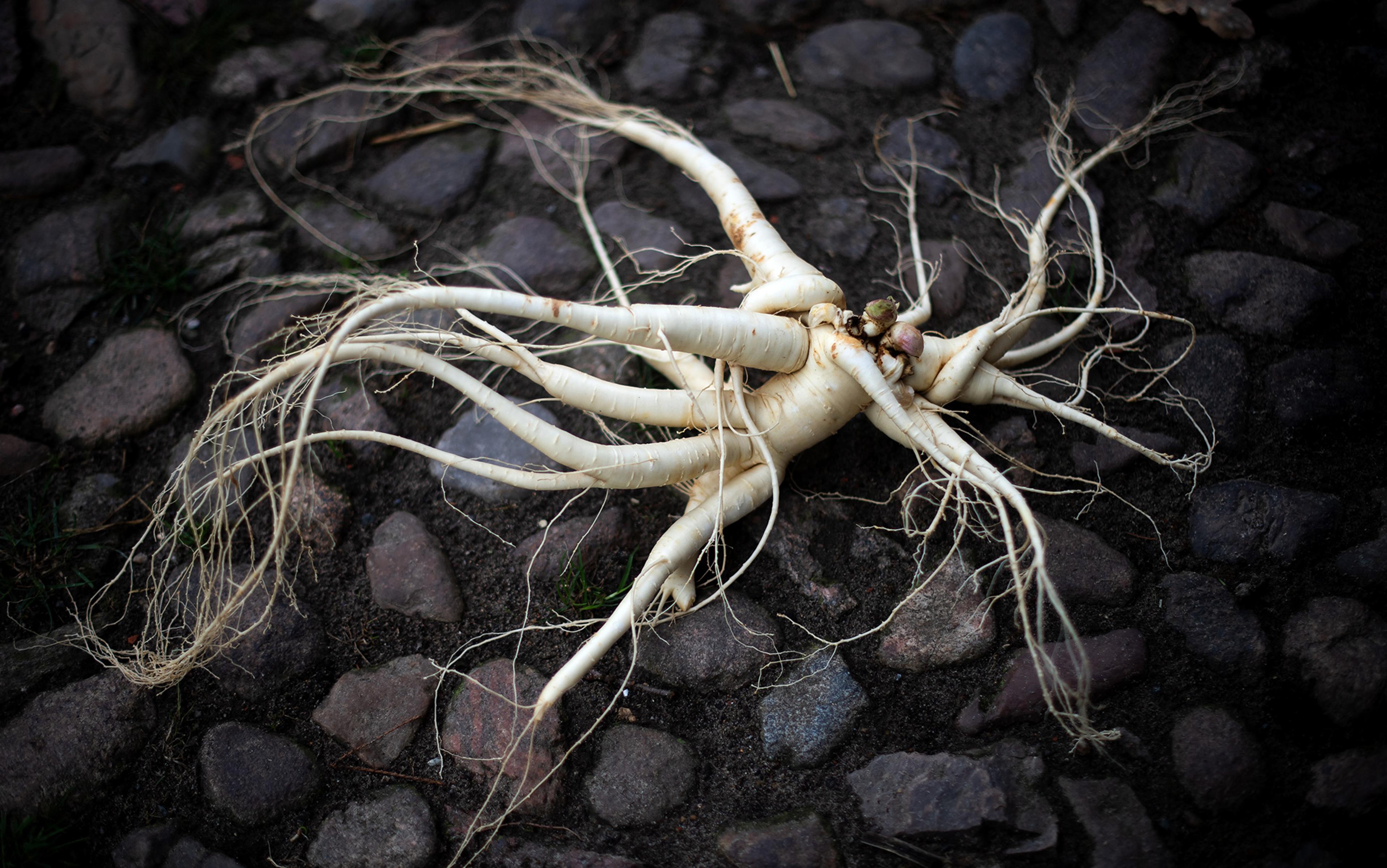Even though Paul Han hasn’t worked as a physician in more than a decade, he still vividly remembers being wrenched awake at 3 am by phone calls from patients. I’m having chest pain, they would say – and, with little else to go on, Han had to advise them on what to do next. Should they go to the emergency room or wait until morning for a regular appointment? If they did go to the ER, were they safe to drive? Would they need an ambulance? Above all, how dire was this?
Han would lie in bed deliberating the options in his head. ‘I’m going to sleep better if I send them to the emergency room,’ he says now, ‘but I know that I’m using resources, it’s inconveniencing everyone, and it may be all for nothing.’ He sometimes lost sleep fretting about the consequences of his eventual decision, calling patients back hours later to make sure they were all right.
Uncertain situations like this are far from rare in clinical practice, where doctors like Han are up against ambiguous symptoms and unpredictable treatments every day. Because medical knowledge is incomplete and constantly evolving, clinical work is often more about testing hypotheses than nailing down a definitive answer. ‘There’s nothing magical about most diagnoses,’ explains Jonathan Ilgen, who researches medical uncertainty at the University of Washington in Seattle. Of course, Ilgen says, some diagnoses, such as viral infections, can be definitively established through testing – but clinical diagnoses, which doctors determine by collating data from various sources, are more ‘socially generated hypotheses’ than anything else.
What Han found strange, however, was how no one around him ever talked about this pervasive uncertainty. His training didn’t touch on the nerve-wracking moments where Han would have no idea what to tell a patient; instead, he was forced to come up with his own strategies, such as a personal rule saying that, if he would stay up all night stressed about a patient, he should send them to the ER. Meanwhile, Han’s fellow physicians presented themselves as experts who never hesitated; faced with uncertainty, they seemed to issue decisions and emotionally disengage.
‘We have a notion of uncertainty as being synonymous with weakness or inertia,’ says the journalist Maggie Jackson, author of Uncertain: The Wisdom and Wonder of Being Unsure (2023). Studies show that people tend to evaluate leaders more positively when those leaders make faster decisions, even though taking time to think through an issue may lead to better outcomes. As the authorities of the medical field, physicians may worry that revealing their uncertainties will expose them as professionally incompetent.
Meanwhile, patients often ask for instant fixes. Han remembers some who demanded antibiotics for vague ailments, like sore throats or sinus pain. ‘What they really want,’ he says, ‘is certainty that they’re going to get better’ – but because certainty wasn’t something Han could provide, he ended up caught between upsetting his patients and prescribing drugs that were likely unnecessary.
The fact that the medical system is designed to be efficient, with split-second appointment windows that rarely allow more than a brief exchange, makes it only harder for doctors to think deeply about uncertain cases. As a primary care physician, Han used to arrive in the morning to find a roster of some 30 patients to meet with over the next few hours. ‘I didn’t have the time to dwell on anything,’ he explains. ‘You’re always moving.’
As John D Halamka and Paul Cerrato, digital healthcare experts at the Mayo Clinic in Minnesota, write in their book Transform: Mayo Clinic Platform and the Digital Future of Health (2025), doctors tend to operate by following ‘disease scripts’ based on recognisable symptom clusters. This habit-driven way of thinking, known as routine expertise, is useful for carrying out standard procedures on limited time. However, physicians falter when confronted with patients whose symptoms don’t fall within the boundaries of existing medical knowledge.
Doctors cut off any search for answers after tests failed to show obvious proof of disease
Meghan O’Rourke is one of these patients. ‘My narrative is not a neat one,’ she writes in her memoir, The Invisible Kingdom (2023). O’Rourke’s illness began so gradually that she can’t say for sure what the original symptom even was, though she opens her book by describing how, in her early 20s, she started experiencing electric shock sensations that felt ‘as if I were being stung by tiny bees.’ These evolved into a collection of vague, roaming symptoms – vertigo, night sweats, fatigue – all of which seemed to come and go at random. ‘I didn’t even connect all the symptoms initially,’ O’Rourke told me in an interview. Her early appointments centred around only whichever symptom was most relevant to each physician’s speciality; and when her tests came back inconclusive, O’Rourke’s doctors looked at the young, physically fit woman in front of them and promised that she had nothing to worry about. She wasn’t ill, they said: just tired, anxious, getting her period.
‘There was no real attempt to figure out what might be going on,’ says O’Rourke. This streak of futile appointments lasted until her early 30s, when O’Rourke’s body became so weighed down by fatigue that she could no longer make her way around the block. ‘Tired isn’t the right word,’ she explains. ‘It felt like my cells had no energy.’ One day, driving a colleague home, she glanced over and realised she had no memory of who the person in her passenger’s seat even was.
‘At that point, I sort of went on a quest to find a doctor who would help me,’ says O’Rourke. This seemed promising at first – she was diagnosed with Hashimoto’s thyroiditis, an autoimmune disease where the immune system mistakenly attacks the thyroid – but her relief waned when treatments made barely a dent in her symptoms, shoving her back into an endless loop of symptoms and dismissal.
After connecting with other patients online, O’Rourke realised her experience was disturbingly common. Countless others reported that, no matter how debilitating their symptoms, doctors cut off any search for answers after tests failed to show obvious proof of disease. ‘It just felt like a big social failure,’ says O’Rourke. ‘The medical system’s entire ethos is built on the idea that it knows what it knows… If you’re in a body that’s at the edge of medical knowledge, your symptoms don’t map onto tidy test results. You’re left stranded.’
Increasingly, algorithms embedded in AI are touted as the solution to the uncertainties that keep patients like O’Rourke from receiving proper care. While doctors can never fully investigate all the lifestyle and genetic factors influencing a patient’s condition, AI can map health data onto larger datasets, including the wide-ranging peer review literature and the records of other patients, quickly calculating risks of developing certain diseases or responding well to treatments.
Max Tretter, a postdoctoral researcher who studies medical uncertainty at the Friedrich-Alexander University of Erlangen-Nuremberg in Germany, sees potential for AI to revolutionise medical decision-making, but the black-and-white narratives surrounding this technology unsettle him.
‘There are all these stories we keep telling each other,’ he says. On one side are the ‘doom narratives’ that frame AI as the ultimate destroyer of humanity, forgetting the technology’s real potential. On the other side, meanwhile, are the stories that treat AI as a panacea poised to replace human clinicians’ faults with indisputable knowledge.
In Tretter’s opinion, clinical use of AI must come with awareness of the technology’s limits. For example, he says, algorithms strip patients of the more subjective influences on their health, valuing conventionally ‘healthy’ activities, like working out at the gym, over activities that are harder to quantify. ‘The time you spend with friends is healthy for your soul,’ Tretter points out, ‘but you can’t really put that into numbers.’
When antibiotics failed to help, her doctors suggested that her symptoms were normal aspects of womanhood
Relegating clinical decisions to AI could also push humans out of the process. ‘[Human doctors] have the capability for real empathy, to suffer with me and know what it feels like to be sick,’ Tretter says. AI, meanwhile, can only analyse emotions quantitatively, without the phenomenological experience that allows doctors to account for patients’ subtle nonverbal cues. Plus, Tretter notes, even patients themselves could lose their role in decision-making if AI is treated as all-knowing – a worrying prospect considering that doctors who treat patients’ non-expert opinions as irrelevant already risk damaging therapeutic relationships and missing critical clues.
Jessica Naranjo used to assume physicians knew best. When she started experiencing recurring UTI symptoms in college, she didn’t question the years-long cycle of visiting the doctor, receiving a UTI test, and taking antibiotics that briefly relieved her symptoms before they reemerged. ‘I just took it as, these are experts in medicine,’ says Naranjo. ‘If they’re saying this is the explanation, they should know more.’
Still, there were signs that something was off. When antibiotics failed to help, Naranjo’s doctors suggested that her symptoms were normal aspects of womanhood, or byproducts of her anxiety. It was only after Naranjo entered training to become a public health professional herself that she realised her doctors hadn’t performed the urine culture needed to diagnose a UTI, instead relying on far-less-conclusive dipstick tests – and when she finally requested an actual culture, the test showed no trace of a UTI.
This rocked Naranjo’s world: she’d always accepted antibiotics as the ultimate cure for her affliction, seeing any lasting symptoms as a kind of ‘phantom infection’. ‘It really weighed on me,’ she says. ‘I started to doubt myself, to the point where I was like, Am I really feeling this, or am I imagining it?’
O’Rourke remembers a similar disorientation at the conflicting messages she received from her body and her physicians. ‘If you’re raised to believe the system and its expertise,’ she says, ‘when that system is telling you nothing’s wrong, you really do question whether your own perceptions are real.’
Physicians may fear that showing uncertainty will reduce patients’ trust while amplifying their anxiety, and studies even find that uncertainties are concealed from patients in 95 per cent of their encounters with physicians. However, acknowledging uncertainty out loud can actually foster more productive doctor-patient relationships.
This is something Han realised after transitioning to work in palliative care, where the aim is to ease suffering rather than cure disease. There, unacknowledged uncertainties in his daily routine became unbearable. Frequently, he was tasked with consulting the families of critically ill patients about whether or not to continue life support and, while most of these patients would never recover, even the slim chance of this happening made families reluctant to let go. ‘Implicit to this conflict is the idea that there’s a right answer,’ Han says, and the pressure to deliver this answer often left him as paralysed as the families he consulted.
Finally, Han decided to try out a new approach: sitting down with a new family, he would state outright that there was no right answer to their conundrum. Instead of losing faith in Han, most families seemed grateful to be relieved of the burden of finding a perfect solution, and Han’s concession made it possible to have an open conversation about the options in front of them.
The ‘safety netting’ technique cushions disclosures of uncertainty with instructions for what will happen next
Naranjo remembers feeling much the same after her negative urine culture, when, instead of ascribing her symptoms to psychological distress, her doctor admitted that he had no idea what was causing them. ‘I remember feeling taken aback,’ says Naranjo. Her former doctors always shielded their eyes from the limits of their knowledge, possibly worried about losing her trust, but in reality, she never expected them to know everything about her body. She just needed them to recognise her symptoms as problems in need of attention.
Of course, physicians can also use uncertainty as an excuse to give up on patients, and it mattered that Naranjo’s doctor also made it clear that he believed her. ‘I felt this instant relief,’ Naranjo says. ‘I had full confidence that, no matter what, this person was at least going to stick by me.’
That was key. Researchers who study medical uncertainty recommend using a technique called safety netting, cushioning disclosures of uncertainty with instructions for what will happen next to show patients they won’t be alone in seeking further answers. In Naranjo’s case, her doctor not only referred her to specialists but continued following up every few months. ‘He really cared,’ she says. As a patient at a teaching hospital, she was used to physicians never staying long enough to build real human relationships with her, but when this doctor eventually moved on, she felt sad saying goodbye.
Building this kind of trust helps physicians make therapeutic progress even when they’re wildly unsure. ‘I say I don’t know all the time,’ says David Kaufman, a physician based in Seattle – yet he’s never seen this uncertainty as detrimental to his clinical work.
Kaufman has an international reputation treating complex disease, but he began his career in the 1980s in Manhattan, where the second patient he ever saw had what later turned out to be HIV. Most physicians resisted working with these patients, who arrived with infections like nothing the medical field had ever seen, leaving Kaufman and about 30 other willing physicians responsible for a massive population that was quickly dying off. Because these patients defied the usual patterns, relying on routine expertise was no longer an option.
Rather than the traditional 15-minute slots, he meets with new patients for 90 minutes
‘When you have a 30-year-old guy come in, and he’s all muscular and looks fantastic, you don’t think he’s immune-deficient,’ Kaufman explains. Instead, he had to apply what researchers call adaptive expertise, adjusting his existing knowledge and innovating when it fell short. ‘It was a whole world of, How do we figure this out?’ he says.
Even as his loved ones cautioned him to stop before he too caught this pernicious new illness, Kaufman himself was invigorated by his daily work. He loved trying out solutions, learning from mistakes, and sharing his findings with his fellow physicians. ‘It was incredibly exciting,’ he says. ‘I mean, it was painful beyond belief… But at the same time, I learned so much.’
What’s miraculous is that, even though they were arriving home late seven days a week after long hours spent with dying patients, no one on Kaufman’s team showed signs of the burnout that plagues so many physicians today. While Kaufman can only speculate, he suspects this was because, instead of being constrained by fleeting appointment windows, they were allowed to devote significant time and energy to each patient.
Recognising the value of time in treating patients whose cases lacked clear symptom profiles, Kaufman was inspired to open the Center for Complex Diseases, where he specialises in medically misunderstood conditions like myalgic encephalomyelitis/chronic fatigue syndrome (ME/CFS), dysautonomia, and now long Covid. Rather than using the traditional 15-minute slots, Kaufman meets with new patients for 90 minutes, spending most of this time just taking their history – a practice that not only provides extensive information about their health but also lays the groundwork for meaningful doctor-patient relationships. ‘Just the act of listening and asking questions is so vindicating for them,’ he explains.
After this, Kaufman identifies a ‘tentative answer’ and starts testing out treatments through a process he describes as ‘thoughtful experimentation’. When I asked him if his patients are ever irritated by this unhurried approach, craving clear-cut answers to their suffering, Kaufman gave a firm no. ‘Overall, they’re an incredibly smart population of patients,’ he says. ‘Almost without exception, they understand, way better than their doctors, how complex they are.’
Before entering medical school, Han was predisposed to recognising uncertainty in a way many of his peers weren’t. Growing up with a minister father in a devout Christian household, he was steeped in questions about faith, mortality and meaning – existential puzzles that many of his peers had never considered. In college, he majored in religion, hoping to delve more deeply into his uncertainties. Yet as a medical student, Han found himself surrounded by a new kind of unshakeable faith – one where, instead of the teachings of the Bible, his peers treated the scientific evidence inscribed in his textbooks as the gospel truth.
‘In medical training, there’s a strong socialisation process where you’re supposed to look like you’re knowledgeable,’ Han explains. ‘There’s this reward process that suppresses the acknowledgement of your own ignorance.’ For example, medical students often learn through simulations, where they practise clinical tasks on actors or mannequins. Because these fictional cases are designed around a grading system that requires decisions to be clearly right or wrong, symptom presentations are predictable and easy to slot into predetermined diagnostic categories, leaving students unprepared for the ambiguity of actual clinical cases.
‘Doctors enter the world of medicine very curious, very willing to tolerate uncertainty,’ Kaufman says. But when medical training links uncertainty with academic failure, that willingness fades. In fact, studies show that more experienced medical trainees may be more prone to ‘freezing’, or clinging to earlier judgments even after receiving conflicting information.
We’re giving a map, but it doesn’t tell you the details about the individual in front of you
After decades in the field, Han decided to leave his clinical work behind and shift to a full-time research career. He’s now a scientist at the National Cancer Institute, an agency within the National Institutes of Health (NIH), where he conducts qualitative studies on the structures in medical education that make students resistant to uncertainty. The goal, he says, is to combat the ‘culture of silence’ that makes uncertainty a nonissue in the medical world. ‘There’s a tradition of not talking about [uncertainty], not disclosing it, not thinking about it,’ says Han. ‘We need to be devoting more attention to uncertainty rather than ignoring it and letting it be under the surface.’
Han isn’t the only researcher focused on this issue – Michelle Lazarus, a professor at Monash University in Melbourne, Australia, was inspired to pursue similar questions after watching her anatomy students memorise an exact picture of the human body they could then map onto patients. ‘If they didn’t learn it all, they were afraid they were going to really harm a patient,’ she says. Yet the field of anatomy is in constant flux, with new studies released every day that radically alter existing understandings. ‘You can’t know all,’ Lazarus says, ‘because we don’t know it all.’
Not only that, patients’ bodies aren’t identical. Lazarus compares textbook diagrams of the human body to geographical maps. ‘You can choose to look at the terrain; you can choose to look at the roads,’ she says. ‘That’s essentially what anatomy is. We’re giving a map, but it doesn’t tell you the details about the individual sitting in front of you.’
At first, she assumed that her students simply needed to develop more comfort with uncertainty – but her eventual research findings complicated this view. In a 2023 study, Lazarus and her colleagues asked a group of medical students to keep a journal throughout a year of clinical placements, documenting moments of both certainty and uncertainty. These entries revealed that, while students’ cognitive and behavioural responses to uncertainty improved as they learned to accept its presence, their emotional responses remained staunchly dominated by stress and anxiety.
From this, Lazarus’ team concluded that expecting students to stop feeling the emotional distress triggered by their uncertainty was unrealistic, especially when the consequences of making the wrong decision were so grave. ‘If somebody’s life is at risk, you’ll feel a great deal of discomfort,’ says Lazarus. What’s important, she says, is learning to manage the discomfort itself. ‘We’re not comfortable with being uncomfortable,’ she says. ‘Our society doesn’t help us sit with that discomfort well.’
Understanding a painting–or a patient’s medical state–can’t be done in an instant
Jonathan Ilgen’s research on medical uncertainty finds that this discomfort often presents as a visceral sensation of arousal. ‘People talked about feeling it in their body,’ he explains. While some physicians may be thrown off by their skyrocketing heart rate, those who learn how to seize on the internal stress response can actually use it as a cue to slow down and act more deliberately.
Lazarus, along with her co-author Georgina Stephens, published the handbook Preparing Learners for Uncertainty in Health Professions (2024). It shows teachers how to create spaces where students can confront and work through discomfort. Lazarus especially promotes the use of ‘grey cases’ – training scenarios with multiple valid answers instead of a single correct one. At first, students often push back. ‘We get a lot of, But I really need to know the answer,’ Lazarus notes. Over time, though, they begin to see that the point is not to land on a predetermined solution but to show they can think critically, weigh options, and justify the course they choose.
Students can also acclimatise to uncertainty through exposure to the arts, since even activities as simple as looking at artworks in a museum require creative, non-linear thinking. ‘We mistakenly assume we can know at a glance,’ says Maggie Jackson, ‘but understanding a painting – or a patient’s medical state – can’t be done in an instant.’
Still, no level of familiarity will ever make coping with uncertainty completely painless. When I last spoke with Han, he told me that, after years spent investigating medical uncertainty as a physician and researcher, he’s recently been forced to confront the issue from the patient side. ‘It’s sort of karmic justice that I’m dealing with this,’ Han says. In some ways, his intimate knowledge of medical uncertainty makes him feel privileged compared with others – after all, he’s spent years counselling patients on strategies for coping with their uncertainty. But at the same time, being so aware of medicine’s limits can feel like a curse.
‘It would be so much easier if I didn’t know what I didn’t know,’ Han explains. Unlike the patients who used to call him in the middle of the night, seeking the guidance of an expert, Han will never have the safe illusion of total medical knowledge, and he understands better than most that he can never fully eradicate the discomfort he feels about his prognosis. ‘I don’t know what’s going to happen,’ Han says. ‘I’m going to have to live with that.’






